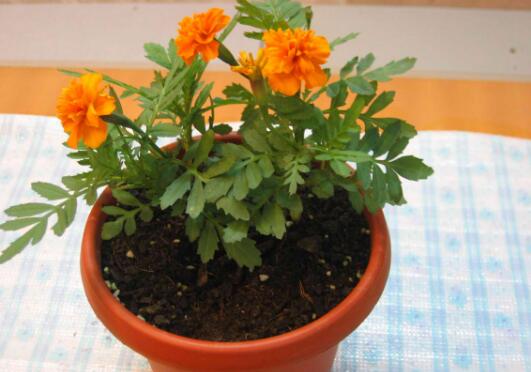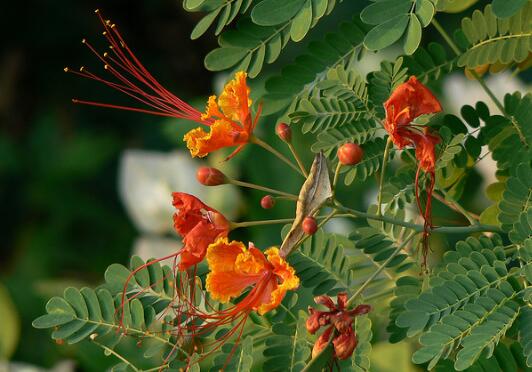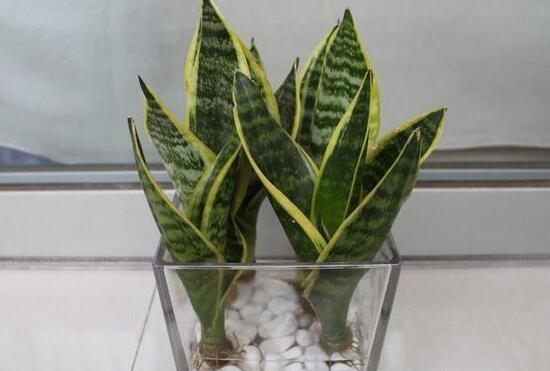When to sow malachite grass, the planting method of malachite grass / can be sown in four seasons
Among the breeding methods of Peacock Grass, sowing and breeding was a common method. This method had been tested by countless people and still had a very high survival rate. However, if you want to sow and grow, you need to pay attention to many points. When is the seed planted? What is the cultivation method of peacock grass? The following small series takes everyone to understand.
1. When is the peacock grass sown? It can be sown in all seasons.

Peacock grass was a plant with strong environmental adaptability. Theoretically speaking, it could be sown all year round. However, in different regions, the best sowing time was also different. Autumn sowing is generally best in the middle and lower reaches of the Yangtze River, while sowing in the south is suitable all year round, and spring sowing is popular in the north.
Second, how to improve the germination rate of peacock grass, temperature control/ventilation
Want to know how to improve the germination rate of peacock grass, we should pay attention to two aspects, first of all, the temperature is best to keep above 18℃, because in a suitable temperature is able to improve the germination rate. Secondly, in terms of soil, it is necessary to choose soil with good air permeability, so that it can breathe better and make the process of breeding peacock grass simpler.
3. Cultivation methods of peacock grass
1. Matrix, good air permeability
The requirements of this kind of plant on the soil are not too strict, but in different soil growth, it still has a certain impact, generally it is best to choose loose fertile sandy soil as the substrate, this kind of soil drainage and permeability are relatively good, can let the plant better absorb nutrients.
2. Disinfect, expose or stir fry
After selecting the matrix of peacock grass, we also need to disinfect it to avoid latent diseases and insect pests. In disinfection, we can break it up and expose it to the sun for disinfection, or we can put it in a pan and fry it, so that any pests can be scalded to death.
3. Germination, warm water immersion
After disinfecting the substrate, we need to stimulate the seeds. We can soak the seeds of peacock grass in warm water for 12-24 hours, wait until the seeds begin to absorb water and expand, and then take them out and sow them. This will make the seeds germinate faster.
4. sowing, pot watering
When it comes to the cultivation method of peacock grass, it is actually very simple. First of all, we can sow the seeds evenly on the soil surface, and then cover it with 1cm of soil to water it. It is best not to water it directly with a kettle when watering, because the seeds of peacock grass are small, so it is easy to wash them away. When watering, we can put the flowerpot into the water and let the water slowly soak up.
How do you plant seeds and when do you plant seeds?
Peacock grass a listen to the name also thought it grew like peacocks-like herbs, in fact, it is not, it is an annual Compositae herbaceous flowers, its color is not as colorful as other flowers, but some dark, this is one of its characteristics, the following to see how it is planted.
How do you plant seeds?
1, first select a box, bowl and other containers, in the container filled with good sandy soil, to create a soft and comfortable germination environment for seeds.
2, then the seeds are sown on the soil, and then covered with a layer of straw, as far as possible to make the seeds and soil contact.
3. Then sprinkle the straw used as mulch with a watering can and let the water slowly drip through the straw into the soil.
4. Finally, wait for the seeds to sprout, and wait until the seeds sprout before opening the straw.
When is the seed planted?
There are many varieties of peacock grass, and the planting time of different peacock grass is also different. The spring and autumn sowing series of peacock grass is about September to February, and the daytime temperature in the south is above 15 degrees Celsius, while the Jenny series is the most suitable for summer sowing from March to August. There are also some other peacock grass sowing time is also different, we can ask the merchant when buying seeds.
The role of peacock grass
1, garden ornamental value peacock grass colorful, a variety of colors, yellow, orange, red and other colors, as well as double petals and other styles. The single-layer peacock grass is delicate and beautiful, and the double-petal peacock grass is more atmospheric and beautiful. Because its flowers are beautiful, it is often used as a flower bed decoration flower, and the figure of peacock grass is often seen on the lawn. Many people may not know what it is called, but you must have seen it in the park and beside the road! In addition, in flower arrangement, bouquet of peacock grass is also one of the commonly used species.
2. Medicinal value
Peacock grass flowers and leaves can be used as medicine, with heat detoxification, phlegm, blood effect. For the treatment of colds, whooping cough, tracheitis and other common diseases have a more significant role. The wild environment of peacock grass is suitable for mountain areas at higher altitudes. Residents in the Caucasus mountains of Russia often eat peacock grass, which is said to have the effect of prolonging life.
Common diseases of Poecilia chinensis and their control
1. Its common diseases are mainly brown spot disease, powdery mildew and grass stem blight, among which grass stem blight is the most common, mainly harming the stems and leaves of peacock grass. At the initial stage of the disease, rash bulges appear on the stems of plants, gray in color, fusiform or round in shape, and the rash bulges will crack in the later stage. Grass stem blight also occurs during the growth period of peacock grass, and can lead to plant death when severe.
Prevention and control methods: first of all, timely drainage work after rain to prevent moisture retention, followed by early spraying drugs, benomyl can be selected. A specific formulation solution of Cyclohexine EC, Chlorothalonil SC and Chlorothalonil SC. The spraying cycle is seven days, spraying 2~3 times.
2. Its common pests and their control The common pests of peacock grass are mainly red spiders. Red spiders will sting and suck the sap of stems and leaves. The moisture content of the affected parts is reduced. The surface of the leaves presents dense pale spots. The leaves are curly and yellow. In severe cases, the plants produce yellow leaves. Foliage, scorched leaves, fallen leaves and even death. Red spiders are also vectors of viral diseases.
Control methods: strengthen cultivation management, early pest occurrence can choose 20% dicofol EC 500~600 times for control.
Peacock grass actually not only rely on its flowers to absorb powder, in fact, its whole body is treasure, both have a good ornamental role, more advantages is its medicinal value, has the effect of clearing away heat and detoxification, it is the old Chinese medicine favorite, so precious plants we must take good care of, avoid pests harm it.
When is the difference between the seed of peacock grass and marigold?
A lot of friends think peacock grass and marigold is a kind of, also do not know peacock grass when sowing, the following together you see the answer and the difference between peacock grass and marigold.
When to plant seeds:
There are many varieties of peacock grass, and the planting time of different peacock grass is also different. The spring and autumn sowing series of peacock grass can be sown from September to February in the southern area with daytime temperature above 15 degrees Celsius, while the Jenny series is the most suitable for summer sowing from March to August. There are also some other peacock grass sowing time is also different, we can ask the merchant when buying seeds.
Difference between peacock grass and marigold:
1, peacock grass and marigold have a special smell, its taste is the same. This is why they call it "smelly hibiscus" or "smelly chrysanthemum".
2. Marigold flowers are relatively large, 6~8 cm in diameter; while peacock flowers are relatively small, about 3~5 cm in diameter. Both leaves are pinnate division, but the difference in leaf size is: marigold leaves 5~10 cm long, 4~8 cm wide; peacock leaves 2.5~5 cm long.
3. Peacock grass and Wanshou chrysanthemum have longer periods, but their flowering periods are the same, and they have been blooming continuously from June to the end of October.
4. The plant type of peacock grass and marigold is neat, both of which are excellent materials for potted plant or flower bed arrangement. Marigold branch angle is small, plant type is upright and relatively high, while peacock grass plant type is relatively short and complete.
5. Peacock grass has fine leaves, small flower shape, each flower is sparse, but the color is more intense and often close to orange, while marigold is yellow.
6. Peacock grass 'only opens in a semicircle' so that its swollen, slender green receptacle can be seen from the side as a goblet or ice cream cone. Marigold, on the other hand, wants to cover the receptacle, so once it blooms, it rolls back its outer petals and densely covers them-like a bubble skirt covering the knees and even the calves, presenting a 'ball' or 'hydrangea' as a whole.
more information
- Prev

How to reproduce buttercups? the mode of reproduction of buttercups is / mainly by sowing.
Buttercup is the city flower of Shantou City, Guangdong Province, China. There are many people who breed it locally, but with more and more people raising buttercup, people are more concerned about its reproduction. About how buttercups breed? What are the breeding methods of buttercup? Next, the editor will take you to learn about it.
- Next

How to propagate Phnom Penh tiger skin orchid, the propagation method of Phnom Penh tiger skin orchid (cutting / ramet)
As a variety of tiger skin orchid, Phnom Penh tiger skin orchid has many functions, it not only looks good, but also can purify the air and prevent radiation, but also can be used medicinally to treat diseases. It is a favorite plant among flower friends. With more and more people raising Phnom Penh tiger skin orchid, many people want to know the breeding method of Phnom Penh tiger skin orchid, and then get a few more pots.
Related
- Fuxing push coffee new agricultural production and marketing class: lack of small-scale processing plants
- Jujube rice field leisure farm deep ploughing Yilan for five years to create a space for organic food and play
- Nongyu Farm-A trial of organic papaya for brave women with advanced technology
- Four points for attention in the prevention and control of diseases and insect pests of edible fungi
- How to add nutrient solution to Edible Fungi
- Is there any good way to control edible fungus mites?
- Open Inoculation Technology of Edible Fungi
- Is there any clever way to use fertilizer for edible fungus in winter?
- What agents are used to kill the pathogens of edible fungi in the mushroom shed?
- Rapid drying of Edible Fungi

